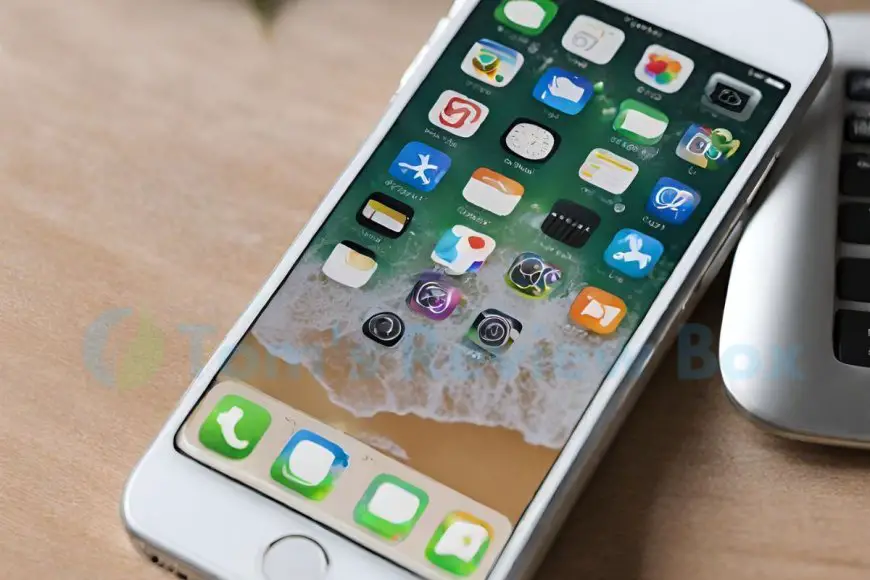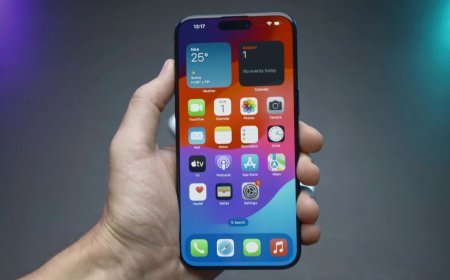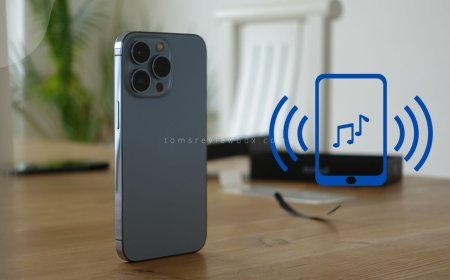How to Turn Off Auto Capitalization on iPhone: A Step-by-Step Guide

Did you know that nearly 70% of iPhone users have experienced the frustration of auto capitalization kicking in at the wrong moment? Whether it's a text message, an email, or a social media post, unintentional capital letters can be irksome. The good news is that there's a simple solution to this common annoyance. In this guide, we'll walk you through the step-by-step process to effortlessly turn off auto capitalization on your iPhone.
Say goodbye to those unexpected uppercase letters interrupting your flow. By following our easy steps, you can regain control over your typing experience and bid farewell to unwanted automatic capitalization once and for all.
Key Takeaways
- To turn off auto-capitalization on your iPhone, go to Settings > General > Keyboard and toggle off the "Auto-Capitalization" option.
- Auto-capitalization can be helpful for proper nouns but may become a nuisance for some users, especially when typing in different languages or specific contexts.
- Disabling auto-capitalization can enhance the typing experience, reduce frustration, and allow for more flexibility in writing style.
- By adjusting the typing assistance options, users can customize their iPhone's keyboard settings to suit their preferences and typing habits.
- Understanding the impact of auto-capitalization on different devices, such as the Magic Keyboard with iPhone, can help users make informed decisions about their typing
- Effective typing on the iPhone can be achieved by familiarizing oneself with the keyboard settings, utilizing shortcuts, and customizing typing assistance options to suit individual needs.
Auto-Capitalization Feature
User Preferences
Auto-capitalization is a default setting on most devices, including the iPhone. It automatically capitalizes the first letter of a sentence, which can enhance readability and professionalism in your written communication. However, this feature might not be suitable for everyone's typing style or preferences.
For instance, if you prefer to write in all lowercase letters for stylistic reasons or if you find it cumbersome to constantly edit auto-capitalized words when writing informally, you may want to consider turning off this feature on your iPhone.
Typing Assistance Options
The auto-capitalization feature varies based on individual writing styles and can be adjusted to suit personal preferences. By reflecting individual typing habits, this option ensures that users have control over how their text appears while maintaining ease of use.
For example, some people might find that they frequently need to override the auto-capitalization feature when typing certain words or acronyms. In such cases, adjusting these settings can help streamline the typing process and reduce frustration.
Understanding Auto-Capitalization
Purpose of Auto-Caps
Auto-capitalization, a feature that includes autocorrect, predictive text, and spell check, is designed to enhance typing accuracy and speed. It aims to improve the overall quality of your written communication by automatically capitalizing the first letter of a new sentence. This feature can be customized according to individual user needs.
The auto-capitalization function works by emphasizing the beginning of sentences in your text. By doing so, it contributes to grammatical correctness and enhances the overall presentation of your written content. For instance, when composing an email or writing a message on your iPhone, this feature ensures that each sentence starts with a capital letter without you having to manually press the shift key.
Auto-capitalization has become an integral part of word processing applications as it is activated by default in most cases. Recognizing punctuation marks such as periods or question marks helps this function identify when a new sentence begins. Furthermore, this feature adapts seamlessly to different languages and various writing styles.
Impact on Typing
The auto-capitalization feature simplifies the process of ensuring proper grammar while typing on an iPhone or any other device with similar functionality. Imagine typing out lengthy messages or emails only to realize that you forgot to capitalize the initial letters at the start of each sentence; auto-capitalization saves users from such inconvenience.
Moreover, for multilingual individuals who switch between languages frequently during their communication activities via mobile devices like iPhones, this automatic function proves invaluable because it adjusts effortlessly based on language requirements.
Reasons to Disable Auto-Capitalization
Personal Preference
Auto-capitalization, although designed to assist with proper grammar and punctuation, can sometimes disrupt the natural flow of typing. For instance, when writing in a more casual or conversational style, the automatic capitalization may not align with the intended tone. In certain contexts or writing styles, such as poetry or informal messaging, auto-capitalization might feel intrusive and unnecessary.
Furthermore, individual preferences play a significant role in this decision. Some users simply prefer manual capitalization for a more personalized touch to their messages or documents. It's essential to consider how auto-capitalization fits into one's unique usage context and stylistic choices. For example, individuals who frequently engage in creative writing may find that turning off auto-capitalization allows them greater control over their expression and artistic flair.
Professional Needs
In professional settings, some individuals opt for manual capitalization as it can convey a more relaxed and approachable tone compared to the formal nature of automatically capitalized text. On the other hand, many professionals appreciate auto-capitalization for its efficiency and consistency across written communication. This reflects diverse writing habits influenced by personal preferences and specific workplace demands.
Moreover, one's choice regarding auto-capitalization is often intertwined with their individual stylistic choices when conveying information at work. While some prefer adhering strictly to language conventions through automatic capitalization for formal correspondence like emails or reports; others may lean towards manually controlling every aspect of their text presentation based on contextual needs.
Creative Writing
In creative writing scenarios where attention to detail is paramount—such as crafting stories or articles—manual control over capital letters becomes crucial. By disabling auto-capitalization in these instances, writers can meticulously shape each sentence according to their narrative requirements without interference from automated features.
Additionally,turning off auto-capitalize aligns with workplace standards that emphasize meticulousness in language use within professional communications like press releases or official statements.
Step-by-Step Guide to Turn Off Auto-Capitalization on iPhone
To turn off auto-capitalization on iPhone, you need to navigate to the keyboard settings. This allows you to customize and modify your auto-capitalization preferences easily. By accessing this feature, you can take control of your writing style and experiment with unconventional formatting.
Located within the device's settings, the keyboard section offers a range of options for customization. It provides easy access for users who want to make specific changes in their typing experience. For instance, if someone prefers not to use auto-capitalization when composing creative pieces or poems, they can conveniently disable it through these settings.
Enabling users to modify their auto-capitalization preferences is particularly useful for individuals who seek flexibility in their creative expression. For example, writers may want to turn off auto-capitalization when drafting informal or conversational text messages where strict grammatical rules are less important.
Adjusting Typing Assistance Options
Autocorrect Features
You can easily turn off this feature. Simply head to your device's keyboard settings and toggle off the auto-capitalization option. This allows you to have more control over how your text appears without unnecessary capitalization.
By turning off auto-capitalization, you can avoid the frustration of having words automatically capitalized when you don't want them to be. For example, if you're typing in a different language or entering specific terms that shouldn't be capitalized, disabling this feature gives you the freedom to type as desired.
Predictive Text
The predictive text feature on iPhones is designed to help users by correcting misspelled words as they type. It aims to improve typing accuracy by providing suggestions based on what's being typed. However, this feature might not always align with individual preferences.
Customizing predictive text based on your personal typing habits and commonly used words can significantly enhance its usefulness. By adjusting these settings according to your preferences, the predictive text feature becomes more tailored and effective for your specific needs.
Spell Check
Spell check is another helpful tool that suggests words as you type, aiming to boost typing speed and overall accuracy. Over time, it adapts to user behavior and refines its word suggestions based on frequently used vocabulary and writing style.
Turning off spell check may lead to an increase in spelling errors; however, for some users who are confident in their spelling abilities or prefer not receiving constant word suggestions while typing, disabling this function could streamline their texting experience.
Disabling Auto-Caps on Different Devices
Windows Techniques
If you're using a Windows device and want to turn off auto-capitalization, you can easily do so by adjusting the typing assistance options. When typing, your device may automatically capitalize the first letter of a new sentence or certain words. To disable this feature, go to your device's settings and look for the "Typing" or "Keyboard" section. From there, you should be able to find an option to toggle off auto-capitalization.
Another technique is identifying misspelled words in real-time. This means that as you type, any misspelled words will be underlined with a red squiggly line. By right-clicking on these words, Windows offers suggestions for corrections and enhances overall document accuracy.
Turning off auto-capitalization provides a consistent experience across different devices running on Windows operating systems. Whether you're using a desktop computer or a laptop with Windows installed, making this adjustment ensures that your typing preferences remain uniform across all your devices.
Android Settings
Disabling auto-capitalization can also be achieved through the system settings. By navigating to the keyboard or language input settings on your Android device, you should see an option related to text correction or autocorrect features. Within these settings, there is typically an option specifically for toggling off auto-capitalization.
It's important to note that while the process remains relatively similar across various versions of Android devices, there might be slight variations based on specific software updates and phone models.
Changing Typing Assistance for Magic Keyboard with iPhone
Pairing Magic Keyboard
You can access this feature through the device's system settings. This offers a convenient way to connect and use the keyboard seamlessly. Once paired, you'll have access to various customization options for auto-capitalization, which can greatly enhance your typing experience.
The pairing process is not only accessible but also consistent across various Android devices. This means that regardless of the specific Android device you are using, you can expect a similar process for connecting and customizing auto-capitalization settings. For example, when pairing the Magic Keyboard with an Android smartphone or tablet, accessing these settings through the system preferences ensures a uniform experience across different devices.
Adjust Settings
After successfully pairing your Magic Keyboard with your Apple device, you can easily adjust its settings to customize auto-capitalization based on your preferences. This seamless integration allows you to fine-tune the keyboard's behavior according to what works best for you.
Understanding iPhone Autocorrects Names to All Caps
Reasons Behind
Auto-capitalization on iPhone is designed to cater to users' preferences and writing styles. By allowing users to customize this feature, it provides control over typing assistance, reflecting individual habits and stylistic choices. For instance, some people may prefer their names or certain words not to be automatically capitalized.
This customization also reflects language conventions and readability standards. Users can ensure that their texts adhere to specific formatting requirements or reflect the proper style for different languages. It impacts overall document presentation, ensuring that the text appears in a manner consistent with the user's preferences and writing habits.
Impact on Users
The impact of auto-capitalization extends beyond mere convenience; it directly influences how users communicate through written text. As such, this feature reflects user preferences and writing habits by accommodating various linguistic nuances and personal style choices.
For example, individuals who frequently use technical terms or jargon may find auto-capitalization intrusive. By having control over this aspect of typing assistance, they can maintain consistency in their documents without unnecessary capitalizations disrupting the flow of information.
Ultimately, turning off auto capitalization on an iPhone empowers users with greater flexibility in expressing themselves through written communication while aligning with language conventions relevant to their content.
Tips for Effective Typing on iPhone
Manual Capitalization
Manual capitalization on your iPhone varies based on individual preferences and usage contexts. It influences your overall typing experience, reflecting diverse writing styles and communication needs. For instance, if you prefer a more casual or informal tone in your messages, turning off auto-capitalization can help achieve that.
By disabling auto capitalization, you gain full control over capitalizing letters. This allows you to capitalize specific words or phrases according to your creative or informal writing purposes. Moreover, it provides flexibility in formatting content as per your preference, without the interference of automatic corrections.
Utilizing Shortcuts
Utilizing shortcuts is another effective way to manage capitalization on an iPhone. These shortcuts allow users full control over how they want their letters capitalized and can be used for specific creative or informal writing purposes. For example, creating a shortcut like "omw" to expand into "on my way" with the first letter lowercase gives you the freedom to personalize abbreviations while maintaining consistent formatting.
Shortcuts provide flexibility in formatting content by allowing users to customize how certain words are automatically corrected or formatted when typed out. This not only enhances user experience but also saves time by reducing the need for manual adjustments after typing.
Voice Typing
Voice typing offers quick access to commonly used phrases or sentences while enhancing typing efficiency and productivity on an iPhone. By enabling voice dictation settings tailored to individual preferences, users can ensure that all dictated text follows their desired capitalization style.
Customizable based on user preferences, voice typing is especially beneficial for those who find traditional typing challenging due to physical limitations or prefer speaking rather than manually inputting text.
Conclusion
You've now gained a comprehensive understanding of the auto-capitalization feature on your iPhone and the reasons why you might want to turn it off. By following the step-by-step guide provided, you can easily disable auto-capitalization and adjust your typing assistance options to suit your preferences. Whether you're using different devices or a Magic Keyboard with your iPhone, the process is adaptable and straightforward. You've learned valuable tips for more effective typing on your iPhone, enhancing your overall user experience.
Take charge of your iPhone's typing experience by implementing these changes and exploring a more personalized approach to text input. Experiment with the settings and find what works best for you. With these adjustments, you can streamline your typing process and avoid unnecessary autocorrections, ultimately leading to smoother communication through your device.
Frequently Asked Questions
How does auto-capitalization work on iPhone?
Auto-capitalization automatically capitalizes the first letter of a sentence. It helps in proper grammar and professional presentation.
Can I customize auto-capitalization settings on my iPhone?
Yes, you can easily turn off or adjust auto-capitalization settings to suit your preferences.
Will turning off auto-capitalization affect other typing features on my iPhone?
No, turning off auto-capitalization will only disable the automatic capitalizing of the first letter of sentences.
Does disabling auto-cap make typing more efficient?
For some users, especially those who use specific jargon or acronyms frequently, turning off auto-cap may improve typing efficiency.
Are there any drawbacks to turning off auto-capitalization on an iPhone?
The main drawback is that it might require more attention to manually capitalize the first letter of each sentence.
What's Your Reaction?







































![MacBook Pro M5: All the features and specs you need to know [LEAKS REVEALED]](https://tomsreviewbox.com/uploads/images/202502/image_430x256_67bd6d7cd7562.jpg)



























